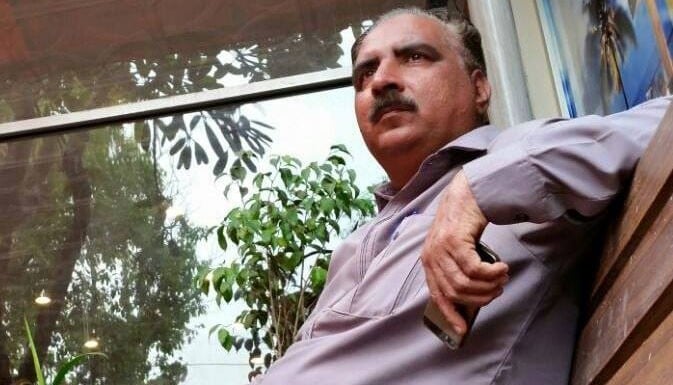
Death is always sad but when it happens to a dear friend, it is an unbearable reality

The untimely death of journalist-colleague and dear friend Asad Sahi came as a rude shock to all of us. How come someone as physically agile as him had a cardiac arrest? Each one of us was left wondering.
For those who knew him personally, Sahi was a man always on the move, always busy investigating an incident or reaching out to the government officials for facts checking. And, when he was not doing that, he was at the Lahore Press Club (LPC)’s card room, enjoying a game with friends. One could hear him scream with joy a mile off.
I met Sahi for the first time during the 1997 elections when he had just started working with the daily Jang and was learning to cope with the competitive environment of its reporting section. He had the experience of working with other news organisations, including the Urdu daily Pakistan, where he made his mark as a political reporter with the capacity to reach out to senior politicians.
Jang was a different ball-game altogether but time proved that Sahi was among those for whom a challenge pushes them to perform even better. It was this competitiveness that came naturally to him and made him stand tall in front of the camera as a television journalist a few years down the line.
I remember him telling me once how he had not been invited to join Geo News. This was shortly before the country’s first 24/7 news channel was launched. We were having a chit-chat at the LPC cafeteria. "Every useless reporter on earth has been roped in [by Geo] but no one’s paying attention to me," he said. His tone was that of mild complaint. A month later, he had joined Geo, and his childlike excitement, as he shared the news, was worth a dekko.
When he got back from the training session, he would playfully flaunt the TV jargon in any conversation with his friends in the media, and make excited claims about the era of print being dead and gone. That was his way of lightening the mood.
Those close to Sahi would agree that a ‘loaded’ Punjabi intonation was one reason why he had to work twice as hard as anybody with his experience and talents, every time he did a piece-to-camera (PTC). Being an easygoing person, he would never shy away but take the challenge head-on.
The camera crew who worked with him would often tell stories of how Sahi made them record 20 repeats before the final PTC -- something that speaks volumes about his perfectionist nature and a sense of commitment to his profession.
The frustration of television reporters out to deliver a PTC amid a distracting crowd is a known fact. For Sahi, it was different. His free spirit made him a sort of a celebrity on the social media during the coverage of the New Year’s celebrations in 2012. As a crowd of youngsters circled around him, screaming and jostling for space, making it impossible for him to report the activity back to the newsroom, his hand holding the microphone went up in the air and landed on a youth’s head. Journalism and reporting was no joke for him.
The family side of Sahi was as active as his professional life. During his years at Jang, he shared a house with a couple of friends. Life became more organised when his family moved to Lahore from his hometown Daska in Sialkot, following his improved earnings from Geo News. The affectionate manner in which he always spoke of his daughter was befitting a true gentleman. I still remember his glowing face and the twinkle in his eyes when his son was born.
Sahi encouraged his brothers, whom he treated like his own children, to join journalism -- two of them are working with prominent news organisations. It’s a legacy that has been handed down to them.
There are many journalists who are good at their work but there are only a few who are great at it, and Asad Sahi was undoubtedly one of the greats. He stood out in a profession that is now crowded with midgets.
Death is always sad but when it happens to a dear friend, it is an unbearable reality. Sahi is not dead; he lives on, in the hearts and minds of his friends, family and colleagues.